#Cross-platform Vs. native apps
Explore tagged Tumblr posts
Text
Mobile App Development - Cross-Platform Vs. Native Apps
Cross-platform Vs. native app development – What’s the best option for your business

With native app development, an app is designed and developed for a specific platform, using languages and tools particular to the ecosystem of those platforms. The 2 most popular platforms today are iOS and Android. Both have their own set of specifications and requirements and the design and development of the application is done to meet those requirements.
Cross-platform app development on the other hand creates apps that can run on multiple platforms using a single codebase with the help of frameworks like React Native, Flutter or Xamarin. Companies in Trinidad that want to design and develop a mobile application for their business are often confused about whether to choose native or cross-platform app development.
Comparing cross-platform and native app development
It is true that native app development is costlier than cross-platform and it also takes longer to develop a native application, it does offer superior performance and access to all the hardware features of a device, such as the GPS, camera, microphone, etc. This benefit allows for a more robust and feature-rich applications and optimal user experience.
The cross-platform app development will face limitations when accessing device features and may not perform as well as native apps. Creating a robust user experience across multiple platforms is also a challenging task with cross-platform apps, leading to inconsistencies in the application's UX design. However, cross-platform apps are more cost-effective and faster to develop. Since they offer access to users on multiple apps, the reach of cross-platform apps is also wider.
Choosing the right app design and development for your business
If high performance and direct access to device features are priorities for you then opt for native app development. However, if you have budget constraints or time limitations, then a cross-platform app would make a good choice. You also need to find out which platform your target audience uses. If your target audiences mostly use one platform, then you can choose native app as you would not have to spend resources on building 2 separate apps for different platforms. Ultimately, you need to weigh the pros and cons of both types of app development approaches and choose the one that best meets your requirement and budget.
0 notes
Text
React Native or Native: Which Is Superior for Developing Apps?

In today’s digital ecosystem, mobile applications are pivotal for engaging users and driving business success. One of the earliest decisions developers and business owners must make is choosing the right technology for their mobile apps: React Native or Native development. Each option brings distinct advantages and trade-offs depending on the project's needs, budget, and long-term goals. This blog explores the strengths and limitations of both approaches to help you determine which is superior for your app development journey in 2025 and beyond.
Understanding the Basics: What Is React Native and Native App Development?
React Native is a popular open-source framework created by Meta (formerly Facebook). It allows developers to build cross-platform apps using JavaScript and React. With a single codebase, developers can deploy apps on both Android and iOS, significantly reducing development time and cost.
On the other hand, Native app development refers to building mobile applications specifically for a single platform—Android or iOS—using languages and tools provided by the platform vendor. For Android, this usually means using Java or Kotlin in Android Studio; for iOS, it's Swift or Objective-C in Xcode.
Performance: React Native vs Native App Development

When it comes to performance, native apps generally have the upper hand. Because they’re built using platform-specific languages and APIs, native apps offer smoother animations, better response times, and faster execution. This is especially important for apps that require heavy processing, advanced graphics (like AR/VR or gaming apps), or deep integration with the device hardware.
React Native apps, while impressive in reach and flexibility, rely on a JavaScript bridge to communicate with native modules. This can introduce latency and performance bottlenecks in high-performance applications. However, for many standard use cases—such as e-commerce, social networking, or booking apps—React Native performance is sufficient and increasingly optimized with tools like Hermes engine and JSI (JavaScript Interface).
Keyword tip: Businesses often search for terms like React Native vs Native performance, making it a core comparison factor in decision-making.
Development Speed and Cost: Why React Native Wins

If you’re working with limited time and budget, React Native app development services may be your best bet. With a single codebase for both iOS and Android, developers can create apps faster and cut costs significantly, sometimes up to 40–50% less than building two native apps.
Furthermore, code reusability, live reloading, and modular architecture in React Native enhance development speed and team collaboration. For startups or MVPs aiming for rapid time-to-market, React Native offers a compelling solution without compromising on functionality.
In contrast, native development requires separate teams, toolsets, and codebases for each platform, effectively doubling the effort and cost. While this might make sense for enterprise-grade or mission-critical apps, it can be overkill for simpler projects.
User Experience and UI: Native Still Leads

Native apps are known for delivering a superior user experience. Since they’re built for a specific operating system, native apps can take full advantage of the platform’s UI guidelines, gestures, animations, and components. The result is an app that feels more integrated and intuitive to the user.
React Native tries to replicate native UI components but can sometimes fall short, particularly with platform-specific design elements or highly customized interfaces. While libraries like React Native Paper and NativeBase offer prebuilt components, native still excels in creating pixel-perfect, fluid UIs.
That said, React Native UI is constantly improving, and for many common use cases, it provides a satisfactory and visually pleasing experience. However, for apps where the user interface is a core differentiator, native development has the edge.
Maintenance and Updates: React Native Simplifies It

From a maintenance perspective, React Native simplifies updates due to its unified codebase. Bug fixes, feature updates, and performance improvements can be rolled out simultaneously across both platforms, streamlining app management.
Moreover, tools like CodePush allow for over-the-air (OTA) updates without requiring users to download a new version from the app store. This is a major advantage for agile teams that need to iterate quickly.
Native apps, however, need platform-specific maintenance and updates, which increases the workload and risks inconsistent feature parity between platforms.
Access to Native APIs and Device Features

If your app requires extensive use of native APIs, sensors, or background services (such as Bluetooth, GPS tracking, biometric authentication, or background video processing), native development offers direct access and better control.
React Native, while offering access to many native modules through libraries or custom bridging, can sometimes lag in supporting the latest native APIs immediately. In such cases, native development provides a smoother path to integrate cutting-edge features.
However, React Native has made significant progress in this area with tools like React Native Reanimated, React Navigation, and community-driven modules that support a wide range of native features.
Community Support and Talent Availability

React Native benefits from a massive and active open-source community. With thousands of contributors and extensive documentation, finding React Native developers is relatively easy, and solutions to common issues are readily available.
While native app development also has strong community support, especially for Android and iOS individually, it may require more specialized expertise, which can increase hiring costs and development time.
From a talent acquisition perspective, React Native offers broader flexibility. Developers familiar with JavaScript and React can transition into mobile development more easily than native development, which demands platform-specific knowledge.
Long-Term Scalability and Security

For apps requiring high scalability, robust security, and tight hardware integration—such as banking, fintech, or healthcare apps—native development is often preferred. The performance stability, access control, and OS-level security features make native apps better suited for enterprise-grade solutions.
React Native apps can scale well too, especially with proper architectural planning and the use of native modules. However, security can be a concern if the JavaScript layer isn’t handled properly. Obfuscation, secure storage, and regular audits are essential when using React Native in sensitive domains.
When to Choose React Native
Choose React Native app development if:
You need to build apps for both iOS and Android quickly.
Budget and time constraints are important.
The app doesn't require complex animations or high-performance hardware access.
You're building an MVP or prototype to test the market.
You want faster iterations and simplified maintenance.
When to Choose Native App Development
Choose native app development if:
The app requires maximum performance, such as 3D games or AR/VR apps.
You need to integrate deeply with device hardware or native APIs.
Security and scalability are top priorities (e.g., in fintech or healthcare).
UI/UX customization is a critical part of your user engagement strategy.
You have the resources to maintain separate codebases for iOS and Android.
Final Verdict: Which Is Superior?
There’s no one-size-fits-all answer. The superior approach—React Native or Native—depends entirely on your project’s goals, complexity, and constraints. React Native is a great choice for startups, cross-platform solutions, and rapid development. Native development, on the other hand, remains unbeatable for performance-critical, secure, and UI-intensive applications.
Partnering with the right mobile app development company is key to evaluating your needs and choosing the best technology. Whether you opt for React Native or native app development, ensure that your chosen team has deep expertise and a clear understanding of your industry requirements.
#Which is better React Native or Native for app development#React Native vs Native app performance comparison#Cost-effective mobile app development in 2025#Best choice for cross-platform app development#Choosing between React Native and Native in 2025#React Native performance#Native app advantages#React Native pros and cons#Native vs cross-platform development#Swift and Kotlin app development#Best framework for mobile app development#iOS and Android app development#Mobile development technologies 2025
0 notes
Text
React Native Vs. Flutter: Which Framework is Right for Your App?
In this blog we shares all about React Native Vs. Flutter: Which Framework is Right for Your App? And When to Choose Flutter App Development, When to Choose React Native App Development. If you want to Build the best mobile application development company in Rajkot, Contact Aphonic Solutions now!

#cross-platform app development#mobile application development company in Rajkot#React Native Vs. Flutter#When to Choose Flutter App Development#When to Choose React Native App Development
0 notes
Text
Top Frameworks for Cross-Platform App Development in 2025
The best cross-platform frameworks in 2025 will help you develop apps that run smoothly on all platforms while saving time, cost, and resources.
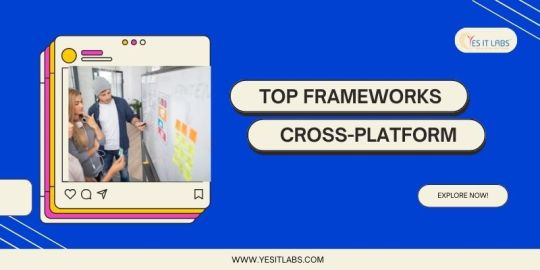
#cross-platform app development framework#native ARM code#nativescript vs react native#custom website development service#mobile applications developers#web developer freelancers
0 notes
Text
Cross-Platforms Vs. Native Apps: Which is better for Your Business?
The digital world is teeming with opportunities for businesses to reach their target audience through mobile applications. Having a mobile app helps businesses reach a broader audience, engage customers, and improve operational efficiency. When developing a mobile app, businesses often face a significant decision: Should they opt for a cross-platform app or a native app? Both approaches offer distinct advantages and disadvantages, and choosing the right one depends on your business needs, budget, and long-term goals. In this blog, we'll delve into the differences between cross-platform and native apps, comparing them in various aspects to help you decide which is better for your business.
Read More:
0 notes
Text
Frontend Development for Mobile Apps with Frameworks like Ionic or React Native
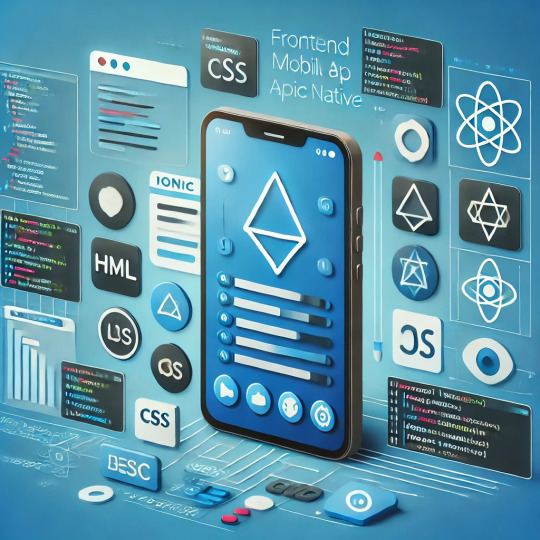
In today's fast-paced digital world, businesses are increasingly seeking efficient ways to build high-quality mobile apps. Frontend development plays a crucial role in creating responsive and user-friendly mobile applications. Two popular frameworks for mobile app frontend development are Ionic and React Native. Both frameworks allow developers to build cross-platform apps, reducing development time and cost. In this article, we’ll explore how these frameworks work and the benefits they offer for mobile app development.
What is Frontend Development in Mobile Apps?
Frontend development focuses on the user interface (UI) and user experience (UX) of an application. For mobile apps, this involves creating interactive elements like buttons, menus, and layouts that users interact with. With the increasing demand for mobile apps, businesses need to deliver seamless user experiences across different platforms, including iOS and Android. This is where frameworks like Ionic and React Native come in.
Why Choose Cross-Platform Frameworks for Mobile App Development?
Building separate apps for iOS and Android can be time-consuming and expensive. Cross-platform frameworks like Ionic and React Native allow developers to write a single codebase that works on both platforms. This not only speeds up the development process but also reduces maintenance efforts. Here are the benefits of using these frameworks:
Cost Efficiency: With a single codebase, companies save money on development and updates.
Faster Development: Developers can launch apps quicker by writing code once and deploying it across platforms.
Consistent UI/UX: Ensures a unified look and feel on both iOS and Android devices.
Ionic Framework for Mobile App Development
Ionic is an open-source framework that uses web technologies like HTML, CSS, and JavaScript to build mobile apps. It's built on top of Angular and integrates well with Apache Cordova, enabling access to native device features like the camera and GPS.
Key Features of Ionic:
Cross-Platform Compatibility: Build apps that run smoothly on both iOS and Android.
Pre-Built UI Components: Ionic offers a wide range of ready-made components, speeding up the design process.
Native Plugin Integration: Access native device functionalities through plugins, without writing native code.
Web View: Apps are rendered in a web view, making it easier for web developers to transition to mobile app development.
Advantages of Ionic:
Perfect for developers familiar with web technologies.
Large community support with extensive documentation.
Fast prototyping for MVP (Minimum Viable Product) development.
React Native for Mobile App Development
React Native, developed by Facebook, is another powerful framework for building cross-platform mobile apps. Unlike Ionic, which uses web technologies, React Native allows developers to write native code for both platforms using JavaScript. This provides better performance compared to web-view-based frameworks.
Key Features of React Native:
Native Components: React Native renders real native components, ensuring faster performance.
Hot Reloading: Developers can instantly see changes without recompiling the entire app.
JavaScript and React: Leverages JavaScript and the popular React library, making it easier for web developers to adopt.
Third-Party Plugins: React Native has a rich ecosystem of third-party plugins for extended functionality.
Advantages of React Native:
Near-native performance for both iOS and Android apps.
Reusable components across platforms.
Large developer community and regular updates from Facebook.
Ionic vs React Native: Which One to Choose?
Choosing between Ionic and React Native depends on the specific needs of your project. Here are some points to consider:
Performance: If performance is critical and you need a near-native feel, React Native is the better option.
Development Speed: For rapid prototyping and building MVPs, Ionic is faster due to its pre-built UI components and web-based architecture.
Familiarity with Technologies: If your team is experienced with Angular, Ionic is an easier choice. If they are more familiar with JavaScript and React, then React Native would be the better option.
The Future of Mobile Frontend Development
The demand for cross-platform mobile apps is growing, and frameworks like Ionic and React Native are at the forefront of this trend. As technology evolves, these frameworks continue to improve, offering better performance, more features, and easier integrations with backend systems. The future of frontend mobile development lies in the ability to create high-performance, cost-effective, and user-friendly apps that work seamlessly across all devices.
Conclusion
Both Ionic and React Native are powerful tools for frontend mobile app development. Choosing the right framework depends on your project’s goals, timeline, and the expertise of your development team. If you're looking to develop a mobile app that offers fast performance, cost efficiency, and a seamless user experience, either of these frameworks can be a great choice. Explore both options and see which fits your needs best for building high-quality mobile apps.
#Frontend mobile app development#Ionic framework for mobile apps#React Native for cross-platform apps#Cross-platform mobile app development#Mobile app frameworks#JavaScript for mobile apps#Ionic vs React Native#Mobile UI/UX development#ahextechnologies#reactnative#ionic
0 notes
Text
Choosing between Native and Cross-Platform development can make or break your app's success.
Discover key insights on performance, user experience, and cost efficiency to make an informed decision for your project.
Dive into our blog to find out which approach best suits your app's needs
#native app development#cross platform#cross platform app development#mobile app development#native vs cross platfom
0 notes
Text
PWA vs Native, Hybrid, SPA, MP: A Complete App Development Guide
In today's digital age, having a mobile app for your business is essential to stay ahead of the competition and cater to the growing needs of mobile users. However, when it comes to an app development company, there are several options to consider; one of them is Nivida Web Solutions Private Limited. Among the various approaches available, Progressive Web Apps (PWAs), Native apps, Hybrid apps, Single-Page Applications (SPAs), and Multi-Platform apps (MP) are the most popular choices. Each of these options has its own strengths and weaknesses. In this comprehensive app development guide, we will compare and contrast these different approaches to help you make an informed decision.
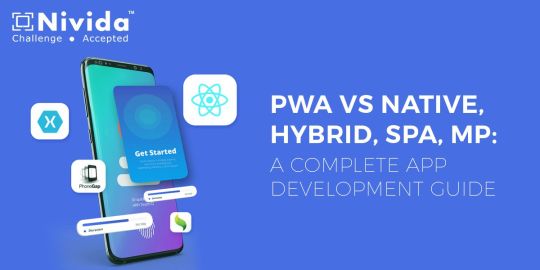
Progressive Web Apps (PWAs):
PWAs are web applications that are designed to look and function like native mobile apps. They are built using web technologies such as HTML, CSS, and JavaScript and are accessible through a web browser. PWAs are highly responsive, installable, and can work offline, making them an excellent choice for businesses looking to reach a wider audience across multiple platforms. Additionally, PWAs can be easily updated without requiring users to download new versions.
Native Apps:
Native apps are developed for specific platforms like iOS or Android using platform-specific languages (Swift or Objective-C for iOS, Java or Kotlin for Android). They offer the best performance, user experience, and access to device-specific features like camera, GPS, and push notifications. However, developing native apps requires separate codebases for different platforms, resulting in higher development costs and longer development cycles.
Hybrid Apps:
Hybrid apps are a combination of web and native apps. They are built using web technologies like HTML, CSS, and JavaScript and are wrapped in a native shell that enables them to be distributed through app stores. Hybrid apps provide a balance between cost-effectiveness and access to native features. However, they may not deliver the same performance as native apps, and certain device-specific functionalities might be limited.
Single-Page Applications (SPAs):
SPAs are web applications that load a single HTML page and dynamically update the content as users interact with the app. They offer a seamless user experience similar to native apps and can be accessed through web browsers. SPAs are easier to develop and maintain compared to native apps, but they may not provide the same level of performance and access to device features.
Multi-Platform Apps (MP):
Multi-platform apps are developed using cross-platform frameworks like React Native, Flutter, or Xamarin. These frameworks allow developers to write code once and deploy it across multiple platforms, saving time and effort. Multi-platform apps can achieve near-native performance and provide access to device features, making them a popular choice for businesses targeting multiple platforms.
When considering app development companies in India or Gujarat, it's essential to find a partner that understands your specific requirements and has expertise in the chosen development approach. Android App development companies in India and Gujarat offer a wide range of services, including native app development, hybrid app development, and PWA development. Similarly, Mobile App development companies in India and Gujarat can provide expertise in developing SPAs and MP apps.
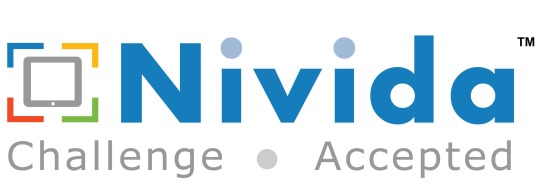
Before choosing an app development approach, consider factors such as budget, target audience, performance requirements, and time-to-market. Each approach has its own pros and cons, and the decision should align with your business goals and objectives. Consulting with a reputable app development company, Nivida Web Solutions Private Limited can help you navigate through these choices and make the right decision for your business.
In conclusion, the choice between PWAs, Native apps, Hybrid apps, SPAs, and MP apps depends on various factors such as performance, cost, development time, and target audience. Each approach has its own merits, and it's important to evaluate them based on your specific needs when selecting an app development company in India.
#eCommerce development company in India#eCommerce development Companies in Gujarat#Mobile App development Companies in India#Mobile App development company in Gujarat#Android App development Companies in India#Android App development company in Gujarat#Digital Marketing company in India
6 notes
·
View notes
Text
Fantasy Cricket App Development: Build the Ultimate App Before the Upcoming Cricket Series 2025
The buzz around fantasy cricket app development is louder than ever as cricket fans across the globe prepare for the upcoming cricket series in 2025, including the India vs Australia bilateral series, Asia Cup 2025, and the much-anticipated T20 World Cup 2025. With millions of users participating in online fantasy leagues, developing a fantasy cricket app is not just a trend—it's a smart business move.
Whether you're a startup, sports enthusiast, or entrepreneur looking to tap into the lucrative world of fantasy sports, now is the ideal time to invest in a fantasy cricket app tailored for the upcoming tournaments.
What is Fantasy Cricket App Development?
Fantasy cricket app development involves creating a digital platform (mobile or web-based) where users form their own virtual cricket teams from real-life players and score points based on players' actual performances in live matches. The better their selected players perform, the more points users earn and the higher their chances of winning real rewards.
A fantasy cricket app should offer a seamless and engaging user experience, real-time data, secure transactions, and features that align with the user intent of cricket lovers: real-time gameplay, rewards, excitement, and community engagement.
Why Fantasy Cricket App Development is Booming in 2025
With upcoming cricket events like the Asia Cup 2025, T20 World Cup 2025, IPL 2025, and India vs Australia series, the fantasy sports industry is set to see a record-breaking number of users. Here’s why this is the perfect time to launch your app:
📈 Rapid User Growth: India alone has over 150 million fantasy sports users.
🏏 High Cricket Engagement: Users spend hours analyzing and picking teams.
💡 Advanced Tech Options: APIs, AI-powered analytics, and real-time updates are easily available.
💰 Profit-Driven Model: Revenue from entry fees, ads, and in-app purchases.
🔐 Secure Legal Framework: Fantasy sports are legally allowed as games of skill in India and many other countries.
Key Features of a High-Performance Fantasy Cricket App
To compete with the big names like Dream11, My11Circle, and MPL, your fantasy cricket app must include:
✅ User Panel Features:
Quick registration/login via email or mobile
Real-time match stats and score updates
User-friendly interface and leaderboard
Multiple contest types (free, paid, private)
Instant wallet integration (deposit/withdrawal)
🛠️ Admin Panel Features:
Manage users, contests, payments, and referrals
Monitor player performance and scoring systems
Handle complaints and support tickets
Push notifications and analytics dashboard
Fantasy Cricket App Development Cost in 2025
The fantasy cricket app development cost varies based on complexity, features, and design. Here's a rough breakdown:
Basic App (Android/iOS): ₹3,00,000 – ₹6,00,000
Mid-level App (Custom UI/UX + Real-time Stats): ₹6,00,000 – ₹10,00,000
Advanced App (Multi-sport, AI, Global Support): ₹10,00,000 – ₹20,00,000+
Working with a professional fantasy sports app development company like IMG Global Infotech ensures a secure, fast, and feature-rich application.
Monetization Strategies for Fantasy Cricket Apps
Wondering how to make money from a fantasy cricket app? These proven methods drive revenue:
💸 Entry Fees for Paid Contests
📊 In-app Advertisements (Google AdMob, Facebook Ads)
🏷️ Premium Memberships
🤝 Sponsorships and Brand Collaborations
📈 Affiliate Marketing and Referrals
Best Technology Stack for Fantasy App Development
To develop a robust, scalable fantasy app, you need a modern and reliable tech stack:
Frontend: React Native, Flutter (for cross-platform)
Backend: Node.js, Laravel, Python (for fast performance)
Database: MongoDB, PostgreSQL
APIs: Cricket Score API (CricAPI, SportsRadar), Payment Gateway (Razorpay, Paytm)
Why Choose IMG Global Infotech for Fantasy Cricket App Development?
IMG Global Infotech is one of the most trusted names in fantasy cricket app development in India, offering customized and scalable fantasy sports solutions. Whether you're building an app like Dream11 or want a unique concept, they deliver:
✅ Seamless user experience
✅ Real-time data sync
✅ Custom contests and AI-based recommendations
✅ Secure wallet system
✅ Post-launch technical support
Their experience in delivering high-performance fantasy cricket apps makes them the preferred choice for entrepreneurs and startups in the fantasy gaming space.
Semantic SEO & Conversational Keywords to Use
When optimizing your site or app page, include the following semantic SEO keywords to improve visibility and ranking:
fantasy cricket app development company
best fantasy cricket app developers
build a fantasy cricket app like Dream11
fantasy sports app solutions India
cost to develop fantasy cricket app
create fantasy app for IPL 2025
fantasy sports app development guide
These keywords match what users are actively searching for in 2025 and help improve topical relevance and search intent targeting.
FAQs – Fantasy Cricket App Development 2025
Q1. Can I create a fantasy cricket app before IPL or T20 World Cup 2025? Yes, this is the ideal time to launch your app before the upcoming cricket events. It ensures maximum user engagement.
Q2. Is fantasy cricket legal in India? Yes, fantasy cricket is considered a game of skill and is legal in most Indian states.
Q3. What is the revenue model of fantasy cricket apps? Fantasy apps earn via contest entry fees, ads, premium plans, and brand sponsorships.
Q4. How long does it take to develop a fantasy cricket app? Basic apps take 2–3 months, while advanced platforms may take 4–6 months depending on features.
Q5. Which company is best for fantasy cricket app development? IMG Global Infotech is highly recommended for fantasy cricket app development with a strong portfolio and custom features.
Final Thoughts
With the T20 World Cup 2025, IPL 2025, and Asia Cup on the horizon, there's never been a better time to invest in fantasy cricket app development. By partnering with expert developers like IMG Global Infotech, you can launch a feature-rich, profitable app that captures the excitement of cricket and turns fans into daily users.
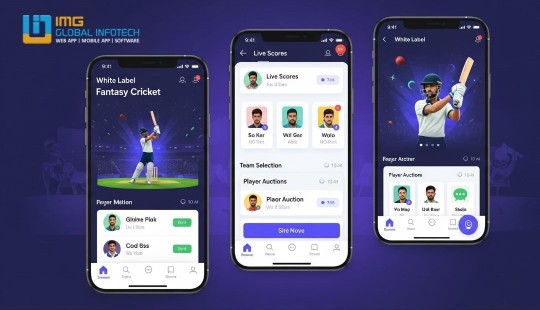
#fantasy cricket app development#fantasy cricket app development company#fantasy cricket app development company in india#fantasy cricket app development cost#fantasy cricket app#app like dream11#img global infotech
1 note
·
View note
Text
Find the Top 5 Latest Mobile App Development Software in 2025 — Expert Picks by TimD — Tim Digital
Choosing the right mobile app development software in 2025 is more than just a technical decision — it’s a strategic advantage. With the growing pressure to deliver faster, reduce bugs, and maintain UI consistency across devices, developers and companies alike are re-evaluating their tech stacks.

Why the Right Mobile Development Stack Makes All the Difference
Many development teams struggle not because of a lack of skill but due to poor tooling and platform fragmentation. Common issues include:
Too much time spent on duplicate codebases
Difficulty managing bugs across platforms
Low design consistency between iOS and Android versions
A better stack can lead to faster time-to-market, fewer bugs, and improved collaboration across teams.
Snapshot: 5 Game-Changing Mobile Development Frameworks
In 2025, five standout mobile development frameworks are leading the way.
Flutter, backed by Google, offers hot reload, expressive visuals, and UI consistency — making it ideal for cross-platform UI precision. React Native, developed by Meta, is JS/TS-based and features fast refresh and a robust plugin ecosystem, best suited for teams transitioning from web to mobile. .NET MAUI, Microsoft’s enterprise-grade solution, combines native speed with C# and deep integration into the Microsoft ecosystem, perfect for unified experiences across mobile and desktop. For Apple-centric development, Swift stands out with hardware-level API access and deep iOS integration, delivering high-performance, iOS-only applications. Lastly, Kotlin, Google’s preferred language for Android, is known for its concise syntax and Jetpack Compose support, making it the go-to choice for scalable, Android-first projects.
1. Flutter — Deliver Visually Consistent Cross-Platform Apps
Backed by Google, Flutter continues to lead the way for teams needing high-performance mobile apps from a single Dart codebase. With its built-in Skia rendering engine, it doesn’t rely on native UI components — giving you full control over visuals on both Android and iOS.
Why It’s a Top Pick:
Rapid UI iteration with Hot Reload
Mature ecosystem on pub.dev
Excellent for MVPs, startups, and custom-designed apps
2. React Native — A Natural Fit for Web Development Teams
Created by Meta, React Native allows JavaScript developers to build native mobile apps without switching tech stacks. It’s ideal for web teams transitioning into mobile, especially with tools like Expo simplifying builds.
Best Use Cases:
Fast deployment using React-based components
Shared codebase between web and mobile
Lightweight apps needing high iteration cycles
3. .NET MAUI — Microsoft’s Unified Solution for Desktop and Mobile
.NET MAUI enables enterprise-grade cross-platform development using C# and XAML. It compiles to native code, ensuring performance, while simplifying development for organizations already using Microsoft tools and Azure.
Why Enterprises Prefer It:
Strong support for desktop/mobile hybrid builds
Full access to native APIs
Streamlined with Visual Studio and Azure DevOps
4. Swift — The Gold Standard for Native iOS App Development
Developed by Apple, Swift is the go-to for building fluid, fast, and fully integrated iOS apps. Combined with SwiftUI or UIKit, it’s the most reliable way to deliver App Store-ready applications with deep device capabilities.
Ideal For:
iOS-only apps
Products that leverage ARKit, Core ML, or HealthKit
Premium apps requiring pixel-perfect animations
5. Kotlin — For Next-Level Native Android Performance
Endorsed by Google and developed by JetBrains, Kotlin is a modern language designed for Android. It brings null safety, concise syntax, and coroutine-based async capabilities, making it a favorite among Android developers in 2025.
Where It Shines:
Clean migration path from Java
Jetpack Compose support for UI innovation
Great for complex, scalable Android apps
Native vs. Cross-Platform vs. Hybrid — What Should You Choose?
When it comes to choosing the right development approach, your decision should align with your product roadmap, team capabilities, and performance expectations. Native development offers the best UX quality and strong scalability, making it ideal for performance-intensive apps — but it comes with higher maintenance needs and moderate development speed. Cross-platform frameworks like Flutter and React Native strike a balance by allowing faster development, lower maintenance, and good scalability, although UX quality may slightly lag behind native builds. On the other hand, hybrid frameworks such as Ionic are fast to develop and easy to maintain but offer limited user experience and only moderate scalability — making them suitable for basic MVPs or internal tools where performance is not critical.
Expert Tip: If your app relies on camera, AR, or sensors — go native. For time-to-market and design parity, cross-platform tools like Flutter or React Native offer the best ROI.
What to Look for in Mobile App Development Platforms
When selecting mobile development tools in 2025, top agencies and development teams recommend looking for:
Real-time debugging and emulation support
Comprehensive UI libraries
CI/CD compatibility (e.g., App Center, GitHub Actions)
Easy deployment to Play Store and App Store
Third-party plugin support for maps, payments, authentication, etc.
Final Thoughts
Whether you’re launching a feature-rich Android app, building an enterprise mobile suite, or rapidly shipping a cross-platform MVP — choosing the right development platform in 2025 is key to avoiding unnecessary rework and scaling with confidence.
If you’re looking for expert guidance, several agencies — like TimD — Tim Digital — are offering tailored consulting and mobile app solutions built on the most robust tools in the market.
👉 Looking for the Best Mobile Apps Development Services in Kolkata? Explore trusted mobile development experts who can help architect your next big idea, fast and friction-free.
Follow us for insights and expert strategies on LinkedIn, Facebook, Instagram, YouTube, Pinterest, and Twitter (X).
#MobileAppDevelopment#AppDevelopmentTools#CrossPlatformDevelopment#FlutterDevelopment#SwiftProgramming#KotlinAndroid#DotNetMAUI#iOSDevelopment#AndroidDevelopment#TechStack2025#TimDigital#TimDTech#SoftwareDevelopment
0 notes
Text
Top React Native App Development Companies to Work With in 2025
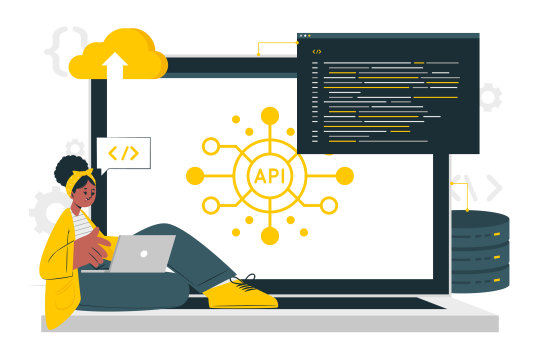
In today’s competitive digital world, businesses are constantly seeking ways to build fast, scalable, and cost-effective mobile apps. One solution that's leading the way is React Native app development. Known for its ability to create high-performing applications for both Android and iOS platforms using a single codebase, it has become the go-to framework for startups and enterprises alike.
The popularity of React Native app development stems from its flexible architecture, community support, and the ease it provides for integrating native modules. Whether you're launching a simple MVP or a feature-rich enterprise app, React Native simplifies the development process while ensuring a smooth user experience.
When it comes to Hybrid vs Native Apps, the debate continues—but React Native cleverly combines the best of both worlds. It allows developers to write once and deploy across platforms, reducing time-to-market and development costs significantly.
Moreover, if you’ve ever wondered, Which Mobile App Framework Suits Your Business – Flutter or React Native?, it's important to analyze your business goals, app complexity, and budget. While Flutter is growing in popularity, React Native offers better JavaScript support, larger community resources, and broader plugin availability.
A standout benefit of React Native app development is that it enables Cross platform development. This means fewer resources, faster testing, and easier maintenance—all while delivering native-like performance.
The Power of React Native in Modern App Development
React Native, backed by Facebook, uses JavaScript and React to build natively rendered apps. With features like hot-reloading, third-party plugin integration, and reusable components, it has become a favorite among developers and product teams.
An interesting trend is the rise of Detailed Tutorial on React Server Side, which showcases how server-side rendering (SSR) with React Native can improve load times, SEO performance, and user experience—especially for mobile web apps and hybrid solutions. Incorporating server-side rendering into your React Native app development process not only boosts performance but also helps in making applications more discoverable through search engines. Another key point to consider is scalability. React Native’s modular architecture and easy integration with native APIs make it ideal for businesses aiming for long-term growth and app flexibility.
Book an Appointment
Want to explore how React Native fits into your mobile strategy? Book an appointment with our React Native consultants today for a free demo and project roadmap.
Choosing the Right React Native App Development Partner
Choosing a trusted development partner can make or break your mobile strategy. The market is filled with numerous agencies and freelancers, but only a few offer proven expertise, full-stack capabilities, and tailored solutions.
That’s why we’ve curated a list of the Top 10 React Native App Development Companies that you can confidently collaborate with in 2025:
Toptal – Known for its elite pool of React Native developers.
MindInventory – Offers both React Native and backend services for full-stack development.
Appinventiv – Provides customized mobile solutions using React Native.
Netguru – Delivers quality UI/UX with React Native speed.
Simform – Offers agile development and enterprise-grade React Native apps.
GeekyAnts – Actively contributes to the React Native ecosystem.
Zco Corporation – Great for startups looking for cost-effective solutions.
WillowTree – Enterprise-level development with a design-first approach.
Fueled – Popular among funded startups.
Hidden Brains – Known for global delivery and scalable app solutions.
Partnering with these companies ensures your React Native app development process is seamless, strategic, and future-ready.
React Native vs Other Frameworks: A Practical Outlook
Let’s revisit the big question: Which Mobile App Framework Suits Your Business – Flutter or React Native?
While Flutter has its advantages like custom widgets and Dart-based programming, React Native still leads in terms of maturity, JavaScript ecosystem, and ready-to-use plugins. It's particularly ideal for businesses that already have web apps built with React.js.
React Native app development also offers easier integration with existing systems, especially if you’re planning a mobile-first transition from a traditional web-based system.
Additionally, businesses focused on scalability often leverage Cross platform development using React Native to maintain code consistency across devices and platforms. This not only accelerates deployment but also reduces ongoing maintenance overheads.
What’s New in React Native for 2025?
With every update, React Native evolves to offer more stability, performance, and developer tools. In 2025, the focus will shift further towards better support for Detailed Tutorial on React Server Side integration, accessibility improvements, and enhanced debugging tools.
Moreover, companies are investing in hybrid strategies due to growing confidence in the performance capabilities of React Native. The Hybrid vs Native Apps conversation is fading as businesses realize that hybrid frameworks like React Native can now deliver native-like speed, look, and feel. Still, if you're unsure, a good development company will help you decide the best fit based on your business requirements.
Final Thoughts
Whether you’re a startup or an enterprise, embracing React Native app development can significantly streamline your mobile strategy. It’s cost-effective, developer-friendly, and ideal for Cross platform development.
From enhancing your app’s performance using Detailed Tutorial on React Server Side to understanding the debate between Hybrid vs Native Apps, React Native continues to prove itself as a forward-looking solution. And when asking Which Mobile App Framework Suits Your Business – Flutter or React Native?, the answer increasingly favors React Native due to its maturity and community-driven growth.
When you're ready to transform your mobile app vision into reality, choosing from the Top 10 React Native App Development Companies can ensure your project is in expert hands.
So what are you waiting for? Your next big mobile success story begins with React Native app development.
0 notes
Text
Unlock Growth: Why Your Business Needs an E-commerce Mobile App

Imagine your customers browsing your products, adding to their cart, and checking out. All while waiting for their coffee or relaxing on the couch. That’s the undeniable power of an e-commerce mobile app. In a world glued to smartphones, not having a dedicated app is like leaving money on the table. But building a successful app isn’t just about coding; it’s about partnering with the right mobile app development company to bring your vision to life.
The Mobile Imperative: Beyond Responsive Websites
A responsive website is essential. But an app offers something more. It provides a direct, personalised, and frictionless channel to your customers. Push notifications announce flash sales instantly. One-tap logins remove checkout barriers. Personalised recommendations based on browsing history feel like having a personal shopper. Apps foster loyalty, increase engagement, and significantly boost conversion rates compared to mobile browsers. They live right on your customer's most personal device, ensuring your brand is always at the top of their mind.
Why Expertise Matters: Choosing the Right Mobile App Development Company
Crafting a high-performing e-commerce app requires deep expertise in user experience (UX), mobile-specific functionalities, security, and backend integration. This is where partnering with a specialised mobile application development company becomes non-negotiable. Here’s what they bring:
⦁ Strategic Insight: They don’t just build; they consult. A good company understands your business goals, target audience, and competitive landscape to shape the app's strategy.
⦁ Technical Mastery: From choosing the right tech stack (native vs. cross-platform) to ensuring seamless integration with your existing inventory, payment gateways (like Stripe and PayPal), and CRM systems.
⦁ User-Centric Design: Creating intuitive navigation, stunning product displays, and a checkout process so smooth that customers barely notice it. They prioritise usability above all.
⦁ Rigorous Testing: Ensuring the app is bug-free, performs flawlessly across different devices and OS versions, and offers a consistently excellent experience.
⦁ Ongoing Support: Launch is just the beginning. A reliable partner provides maintenance, updates, and new feature development.
Demystifying E-commerce App Development Services
What exactly do you get when you engage expert e-commerce app development services? It’s a comprehensive suite designed to cover every aspect:
⦁ Discovery & Strategy: Defining the app's core features, user flows, and technical architecture.
⦁ UI/UX Design: Crafting visually appealing interfaces with wireframes, prototypes, and pixel-perfect designs focused on maximising conversions.
⦁ Feature Development: Implementing essential e-commerce features: product catalogues, search/filter, user accounts, multiple payment options, secure checkout, order tracking, wishlists, and reviews.
⦁ Advanced Capabilities: Integrating push notifications, AR/VR product previews, AI-driven recommendations, loyalty programmes, chatbots, and social media logins.
⦁ Backend & API Integration: Building the robust engine that powers the app. It connects to your e-commerce platform (Shopify, Magento, WooCommerce, or custom), inventory, payment processors, and shipping APIs.
⦁ Quality Assurance (QA): Meticulous testing for functionality, usability, performance, and security.
⦁ Deployment & Launch: Guiding the app through the App Store and Google Play submission process.
⦁ Maintenance & Updates: Providing ongoing support, fixing bugs, releasing updates, and adding new features post-launch.
Selecting Your Perfect Mobile App Development Partner
Choosing the right mobile app development company is critical. Look beyond flashy portfolios. Consider:
⦁ Proven E-commerce Experience: Do they have a strong track record specifically in building successful e-commerce apps? Ask for case studies.
⦁ Transparent Process: Do they communicate, involve you in key decisions, and offer transparent pricing models?
⦁ Technical Proficiency: Are they up-to-date with the latest mobile technologies and security best practices (especially PCI compliance for payments)?
⦁ Post-Launch Commitment: Do they offer robust maintenance and support packages?
⦁ Cultural Fit: Do you communicate well? Do they understand your vision and business ethos?
Investing in Your Mobile Future An e-commerce mobile app is no longer a luxury; it’s a fundamental growth engine. It deepens customer relationships, drives sales, and builds brand loyalty in an increasingly mobile-first marketplace. By partnering with a skilled mobile application development company offering comprehensive e-commerce app development services, you transform your online store from a destination into a convenient, engaging, and indispensable part of your customers' daily lives. Don’t just meet your customers where they are; rather, live in their pocket, ready to delight them with every tap. Start planning your app journey today.
0 notes
Text
How Can Companies Optimize ROI by Converting Android Apps to iOS (or Vice Versa)?
Optimize ROI by Converting Android Apps to iOS
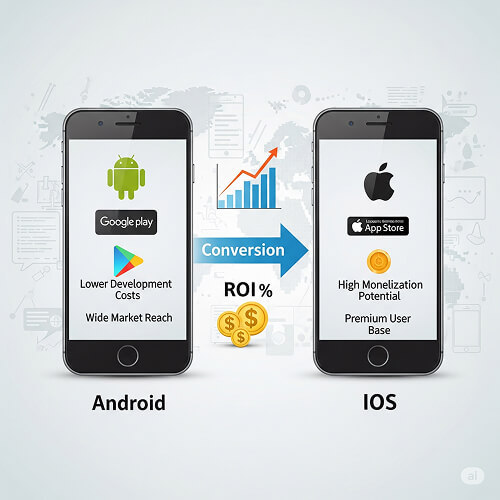
Introduction
In today’s mobile-first landscape, companies aiming to maximize their mobile app ROI must consider platform expansion. With Android dominating in user volume and iOS leading in revenue generation, converting your app from Android to iOS (or vice versa) can be a strategic move to reach a broader audience and boost profitability. This blog explores how app conversion can be a growth catalyst, helping businesses lower acquisition costs and increase user engagement across platforms.
Understanding Android to iOS App Conversion (or Vice Versa)
App conversion refers to the process of adapting an existing mobile application to operate on a different platform. Whether moving from Android to iOS or the reverse, this process involves more than just copying code. It includes reworking the UI/UX, adapting to platform-specific APIs, and ensuring functional parity across devices. Successful app conversion demands expertise in both Android and iOS app development to maintain performance and user satisfaction.
Top Reasons to Convert Android Apps to iOS (or Vice Versa)
Reach a wider audience: Tap into new user segments by expanding your presence to another platform.
Increase revenue potential: iOS users typically have higher lifetime value, while Android's larger user base can fuel ad-driven revenue models.
Improve brand presence: Being available on both platforms builds credibility and trust with users.
Maximize previous investments: Reusing assets and backend systems speeds up time-to-market and reduces development costs.
How App Conversion Improves ROI
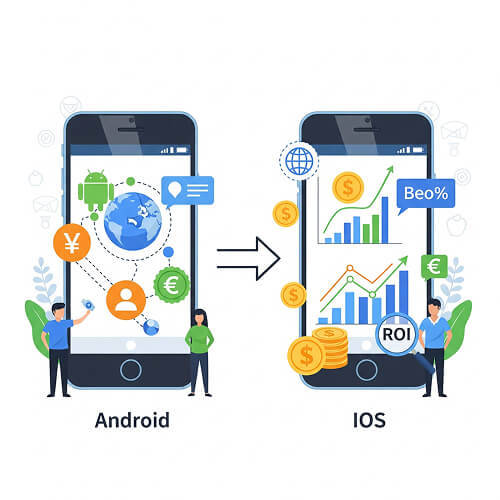
Converting your app allows you to scale without starting from scratch, which significantly lowers development costs. The ability to reach more users boosts installs, engagement, and revenue. Moreover, a cross-platform presence strengthens brand authority and opens doors to new monetization opportunities, like in-app purchases or subscriptions, ultimately maximizing return on investment.
Key Challenges in Mobile App Platform Conversion
UI/UX differences: iOS and Android have distinct design languages (Material vs. Human Interface Guidelines).
Technical variations: Differences in programming languages (Java/Kotlin for Android vs. Swift/Objective-C for iOS).
Third-party integration compatibility: Not all libraries and SDKs work identically across platforms.
Testing requirements: Each platform has its own device ecosystem and app store policies.
Steps to Successfully Convert Your Mobile App
Audit existing app code and features
Choose the right development approach (native or cross-platform)
Redesign UI/UX to fit the new platform standards
Adapt backend APIs and third-party services
Test extensively across devices and OS versions
Deploy to the relevant app store with optimized listings
Tools & Technologies for App Conversion
Flutter: Ideal for creating a single codebase for both platforms
Kotlin Multiplatform: Enables code sharing between Android and iOS
React Native: Popular framework for cross-platform mobile development
Xamarin: Microsoft-backed tool for .NET-based apps
Choosing the right tech stack depends on performance needs, UI complexity, and existing code structure.
Cost Estimation & ROI Forecasting

App conversion is typically more cost-effective than building a new app from scratch. Factors affecting cost include app complexity, UI redesign, and backend changes. Companies should calculate potential ROI by comparing conversion cost with projected increase in user acquisition, engagement, and revenue across the new platform.
Case Studies: App Conversion Success Stories
Example 1: A retail app that expanded from iOS to Android and saw a 40% increase in monthly active users
Example 2: A SaaS product that moved from Android to iOS, leading to a 30% boost in in-app purchases These examples showcase how strategic app conversion can result in measurable growth.
Tips to Maximize ROI After Converting Your App
Invest in App Store Optimization (ASO) for visibility
Launch targeted marketing campaigns on the new platform
Monitor analytics closely to track engagement and retention
Solicit user feedback to continuously refine the app experience
Conclusion
Converting your Android app to iOS or vice versa is not just a technical decision—it's a business strategy. When done right, it can significantly enhance user reach, reduce development overhead, and boost ROI. By partnering with an experienced app development company like CQLsys Technologies, you can ensure a smooth transition and unlock new growth opportunities across platforms.
#AppMigration#MobileStrategy#AppMarketing#TechROI#DigitalGrowth#AppScaling#iOSDeveloper#AndroidDeveloper#MobileSolutions#BusinessTech#UserEngagement#RevenueGrowth#AppUpgrade#TechTips#CQLsysTech#Innovation
0 notes
Text
Flutter vs Python
If you’re deciding between Flutter and Python for building a personal blog, the best choice depends on your goals, technical skills, and desired features. Here’s a detailed comparison:
🔹 Option 1: Flutter (Frontend + Cross-Platform Blog)
✅ Pros:
Cross-Platform UI
Single codebase for mobile (iOS/Android), web, and desktop versions of your blog.
Great if you want a native-feeling mobile app for your blog.
Example: Medium-like app but with Flutter.
Beautiful & Customizable UI
Flutter’s widget system makes it easy to create animations, transitions, and responsive designs.
Better for interactive content (e.g., swipeable cards, embedded videos).
Hot Reload for Fast Iteration
Quickly tweak UI without restarting the app.
0 notes
Text
RCS Message Explained: Why It’s the Future in RCS vs SMS Battle
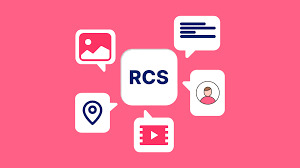
RCS Message: The Future of Mobile Texting in the RCS vs SMS Era
In today’s fast-paced digital age, the way we communicate is undergoing a massive transformation. Enter the RCS message, or Rich Communication Services—a modern solution built to overcome the outdated limits of SMS. As smartphones become smarter, the shift from traditional texting to RCS messaging is gaining momentum, and for good reason.
Unlike SMS, which restricts users to 160 characters and lacks multimedia support, RCS message platforms offer a full-featured communication experience. Think of it as bringing the best of chat apps directly into your default messaging app—no downloads, no third-party logins, just seamless interaction.
What Exactly Is an RCS Message?
To clarify, RCS message technology is the next-generation protocol that enhances messaging on mobile devices. Instead of sending only basic text, you can now share high-resolution photos and videos, see typing indicators, get read receipts, and even use smart replies. All of this happens within the native messaging app, making it incredibly user-friendly.
Furthermore, rcs message systems sync across multiple devices, allowing users to switch from their phone to a tablet without losing the conversation thread. This cross-device functionality significantly improves productivity and user experience.
Key Features of RCS Messaging
Compared to traditional texting, the feature set of an rcs message is far more advanced. Here are a few reasons why it’s gaining ground in the rcs vs sms debate:
Multimedia Sharing: Send videos, audio files, and images in high quality.
Typing Indicators & Read Receipts: Know when someone’s typing or has seen your message.
Group Chat Enhancements: Enjoy seamless group coordination with thread replies and message reactions.
Verified Business Accounts: Communicate safely with verified brands.
Interactive Elements: Buttons like "Buy Now" or "Track Order" streamline tasks.
Additionally, these enhancements make conversations more natural and efficient—whether you’re planning a trip with friends or checking on an online order.
RCS vs SMS: Why the Shift Matters
The rcs vs sms comparison often boils down to capability and user experience. SMS lacks modern features and security protocols, while rcs message platforms offer encrypted communication, real-time delivery updates, and a more app-like interface.
Moreover, in the rcs vs sms battle, RCS stands out by offering richer, branded messaging for businesses. This means customers can interact with companies in a personalized, visual, and engaging way—something SMS simply can’t match.
RCS Messaging for Businesses: A New Frontier
From a business standpoint, the rcs message model is a major breakthrough. Brands can now engage customers using branded messages, interactive product carousels, and AI chatbots—all without requiring an app.
More importantly, platforms like LeminAi allow small businesses to create these engaging campaigns without technical expertise. For example, retailers can send promotional offers with images and buttons; logistics companies can offer real-time delivery tracking; and healthcare providers can simplify appointment confirmations.
As a result, customer engagement and satisfaction increase significantly, giving businesses a competitive edge in communication.
How to Enable RCS Messaging on Your Device
Switching to rcs message technology is incredibly easy. Here's how to activate it:
On Android:
Open Google Messages
Tap your profile photo
Go to Settings > RCS Chats
Toggle it ON
On iPhone (iOS 18+):
Open Settings
Tap Messages
Turn ON RCS Messaging
Once both parties have RCS enabled, you'll notice instant upgrades—smoother chats, enhanced media sharing, and a more connected experience.
Real-World Applications of RCS Messaging
Across industries, rcs message technology is proving its value:
Retail: Shoppers get visually rich promotions and one-click purchase options.
Healthcare: Patients confirm appointments through interactive messages.
Customer Support: Service agents provide quick, visual responses using automated tools.
Even better, since RCS works within the native messaging app, there’s no learning curve for users or customers.
Final Thoughts: Embracing the Future of Communication
In conclusion, the rcs message is not just a trend—it’s the future of mobile communication. Its features make texting more dynamic, intelligent, and responsive. Compared to SMS, it delivers a far richer and more personalized experience, both for users and businesses.
Whether you're chatting casually, sharing media, or interacting with a brand, RCS makes the process smarter and more intuitive. As more carriers and devices adopt this technology, the RCS revolution is well underway—proving that in the battle of rcs vs sms, RCS is the clear winner.
Now is the time to upgrade how you message—because the future is already typing
0 notes
Text
Enterprise Application Platform: Future Trends and Innovations
The Enterprise Application Platform (EAP) landscape is constantly evolving, driven by technological advancements and changing business needs. Understanding the future trends and innovations in this area is crucial for businesses looking to stay competitive and maximize the benefits of their EAP investments.

Key Future Trends
AI and Machine Learning (AI/ML) Integration: AI and ML are increasingly being integrated into EAPs to automate tasks, improve decision-making, and personalize user experiences.
Low-Code/No-Code Development: These platforms enable citizen developers to build and deploy applications quickly, reducing the reliance on traditional coding and accelerating digital transformation.
Cloud-Native Architecture: EAPs are increasingly being built on cloud-native architectures, leveraging microservices, containers, and serverless computing to improve scalability, flexibility, and resilience.
Edge Computing: Bringing processing closer to the data source, edge computing enables faster response times and improved performance for IoT devices and other edge applications.
Internet of Things (IoT) Integration: EAPs are becoming more adept at integrating with IoT devices, enabling businesses to collect and analyze data from a wider range of sources.
Microservices Architecture: This architectural style allows for the development of applications as a collection of small, independent services, improving flexibility and maintainability.
Serverless Computing: This model allows developers to build and run applications without managing servers, reducing operational overhead and improving scalability.
Enhanced Security: With increasing cyber threats, EAPs are incorporating advanced security features to protect sensitive business data and ensure compliance with industry regulations.
Impact on Businesses
These future trends will have a significant impact on businesses, enabling them to:
Automate complex processes: AI/ML will automate tasks that were previously done manually, freeing up employees for more strategic work.
Develop applications faster: Low-code/no-code platforms will accelerate the development and deployment of new applications.
Improve scalability and flexibility: Cloud-native architectures will allow businesses to scale their applications easily and adapt to changing demands.
Gain real-time insights: Edge computing and IoT integration will provide businesses with access to real-time data from a wider range of sources.
Enhance security: Advanced security features will protect sensitive business data and ensure compliance.
Conclusion
The future of Enterprise Application Platforms is exciting, with numerous innovations on the horizon. By understanding these trends and adopting the right technologies, businesses can transform their operations, improve efficiency, and achieve sustainable growth in the years to come.
Ai Auto code
AI Wave maker
Rapid low code application development platform
Low code platform Enterprise software for application development
Low code application development platform or Low code platform for application development
What is Low code app development platforms
Composable low code isvs
Java-based low code platform
Composable isvs
RAD studio-Rapid application development software platform
APAAS-application platform as a service
Cloud Low code application development platform
Legacy application modernization solutions
React-native cross-platform mobile application development platform
Compare Wavemaker vs Outsystems vs mendix vs power apps — low code alternatives and its pricing
New and fast application development platform
Rapid application development model or RAD model
Low-code for consumable Banking and financial Low-code platform solutions
Internal api vs external apis
Rapid application development vs SDLC Platform
Custom Enterprise low code application development platform
Legacy enterprise application Modernization Platform
Embedded banking and Finance, Low-Code and the Emerging Face of Adaptability
BAAS- Low code Banking as a service
Composable Low code banking solutions
Telecom low code platform
Alternative to Xamarin and Cordova
Wavemaker Low code
Legacy application modernization platform
Cross-Platform React Native Mobile App Development Platform
#technology#software#low code#lowcode#app#app development#business#low code application development platform#rad#reactnative
1 note
·
View note